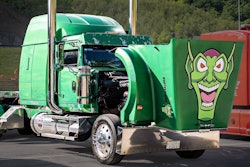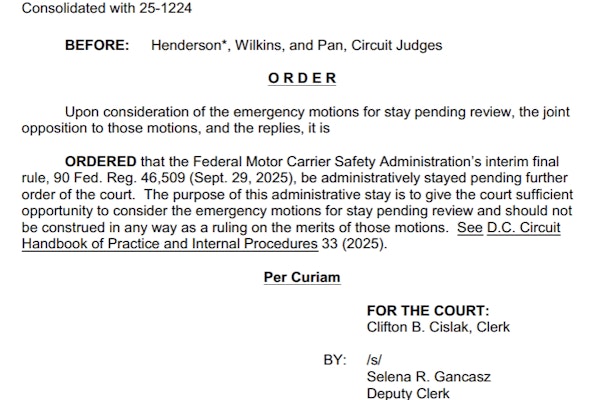
The U.S. Court of Appeals For The District of Columbia Circuit on Monday decided on a lawsuit seeking to block DOT’s emergency final rule making that sought to strip 200,000 non-citizens of CDLs.
The court ordered "that the Federal Motor Carrier Safety Administration’s interim final rule" be "administratively stayed pending further order of the court."
The pause will "give the court sufficient opportunity to consider the emergency motions for stay pending review and should not be construed in any way as a ruling on the merits of those motions," the court's statement said. It’s unclear how long that will take.
The decision followed DOT’s September 29 emergency final rule tightening eligibility for non-citizens of the U.S. to get commercial driving privileges. DOT found widespread lapses in CDL issuance protocols around the country and cited five deadly crashes as well as unknowns around non-citizen applicants as motivation for the rule.
A lawsuit filed two weeks after on behalf of an owner-operator who came to the U.S. at two years old and now runs a small fleet sought to stop the rule, finding it discriminatory based on citizenship status.
The legal petitioners explained their case at length in the court filings, and DOT had a chance to respond.

As of Monday, the court has sided with the petitioners and many non-domiciled CDL drivers who complained the move violated their rights.
DOT Secretary Sean Duffy in a press conference on October 24 said that most states had complied with the new rule demanding a pause of non-domiciled CDL issuance and a total review from all 50 states but some, notably California, had not.
On the same day DOT rolled out the new emergency rule making, it issued a notice to California that the state was substantially out of compliance with federal CDL issuance regulations.
California, in a response a month later, vigorously denied those claims, but admitted to several technical faults in its system and some 20,000 non-domiciled CDLs that did not comply with its own state laws. California’s response also raises a handful of legal and practical challenges to DOT’s rule making.







